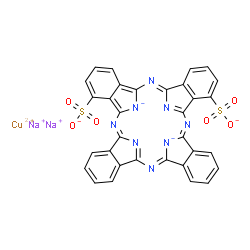Full tensor diffusion imaging is not required to assess the white-matter integrity in mouse contusion spinal cord injury.
Tsang-Wei Tu, Joong H Kim, Jian Wang, Sheng-Kwei Song
文献索引:J. Neurotrauma 27(1) , 253-62, (2010)
全文:HTML全文
摘要
In vivo diffusion tensor imaging (DTI) derived indices have been demonstrated to quantify accurately white-matter injury after contusion spinal cord injury (SCI) in rodents. In general, a full diffusion tensor analysis requires the acquisition of diffusion-weighted images (DWI) along at least six independent directions of diffusion-sensitizing gradients. Thus, DTI measurements of the rodent central nervous system are time consuming. In this study, diffusion indices derived using the two-direction DWI (parallel and perpendicular to axonal tracts) were compared with those obtained using six-direction DTI in a mouse model of SCI. It was hypothesized that the mouse spinal cord ventral-lateral white-matter (VLWM) tracts, T8-T10 in this study, aligned with the main magnet axis (z) allowing the apparent diffusion coefficient parallel and perpendicular to the axis of the spine to be derived with diffusion-weighting gradients in the z and y axes of the magnet coordinate respectively. Compared with six-direction full tensor DTI, two-direction DWI provided comparable diffusion indices in mouse spinal cords. The measured extent of spared white matter after injury, estimated by anisotropy indices, using both six-direction DTI and two-direction DWI were in close agreement and correlated well with histological staining and behavioral assessment. The results suggest that the two-direction DWI derived indices may be used, with significantly reduced imaging time, to estimate accurately spared white matter in mouse SCI.
相关化合物
| 结构式 | 名称/CAS号 | 分子式 | 全部文献 |
|---|---|---|---|
 |
溶剂蓝38
CAS:1328-51-4 |
C32H12CuN8Na2O6S2 |
|
Autophagy regulates the therapeutic potential of mesenchymal...
2014-07-01 [Autophagy 10(7) , 1301-15, (2014)] |
|
Optic neuritis in different strains of mice by a recombinant...
2009-07-01 [Invest. Ophthalmol. Vis. Sci. 50(7) , 3275-82, (2009)] |
|
17beta-estradiol protects male mice from cuprizone-induced d...
2010-08-01 [Neurobiol. Dis. 39(2) , 127-37, (2010)] |
|
Postinjury estrogen treatment of chronic spinal cord injury ...
2010-06-01 [J. Neurosci. Res. 88(8) , 1738-50, (2010)] |
|
Inhibition of inflammation and oxidative stress by Angelica ...
2012-01-01 [J. Neurosci. Res. 90(1) , 243-56, (2012)] |